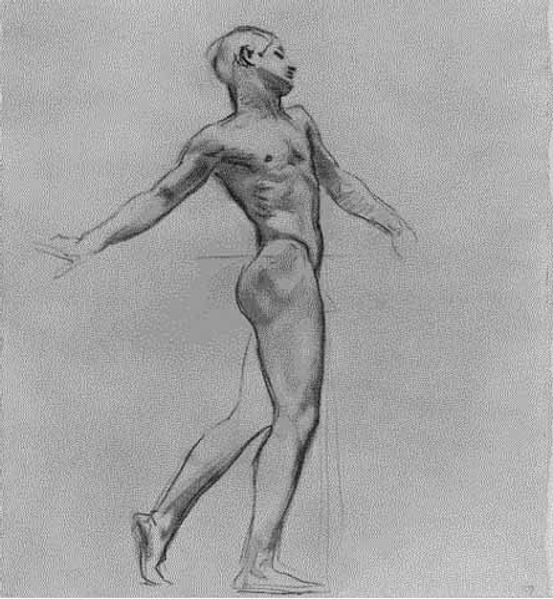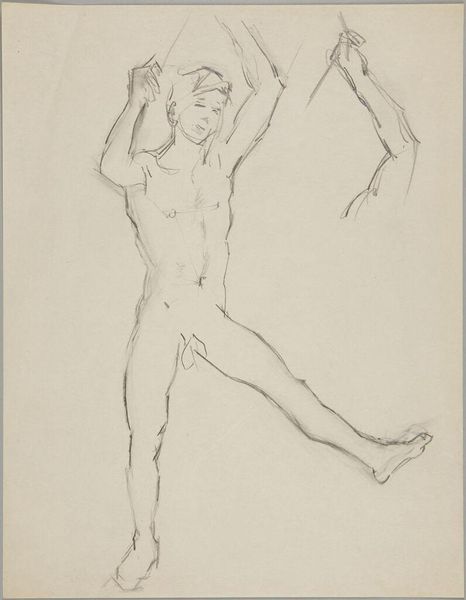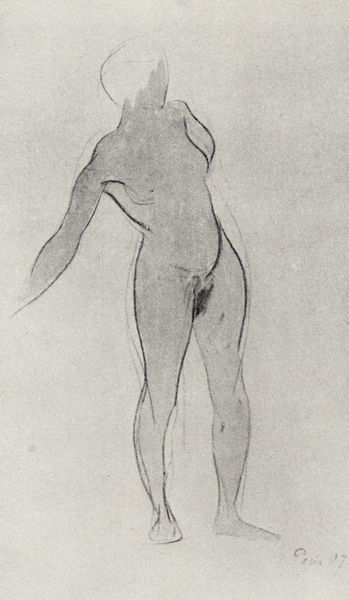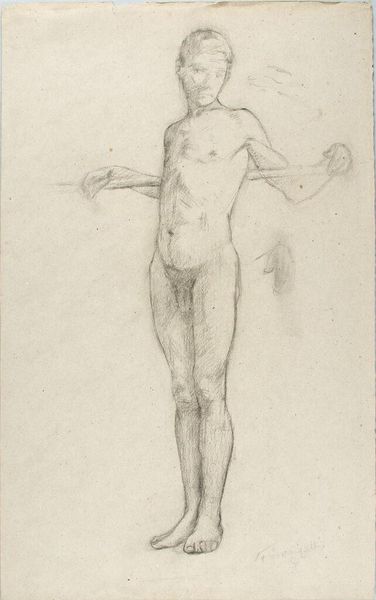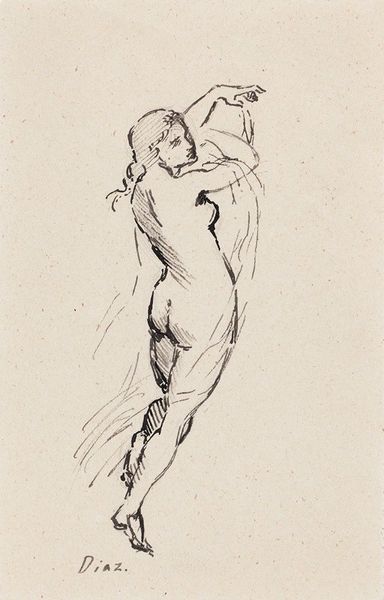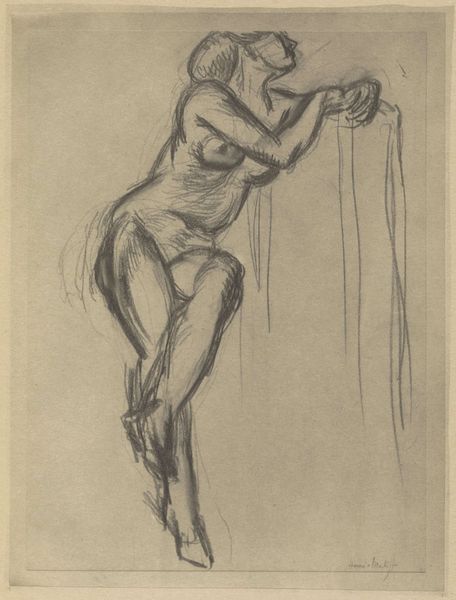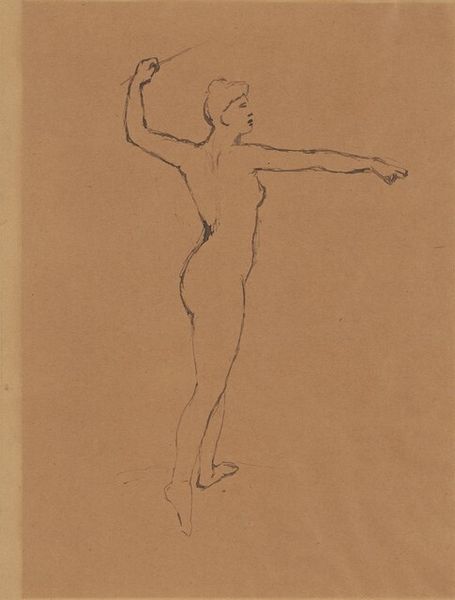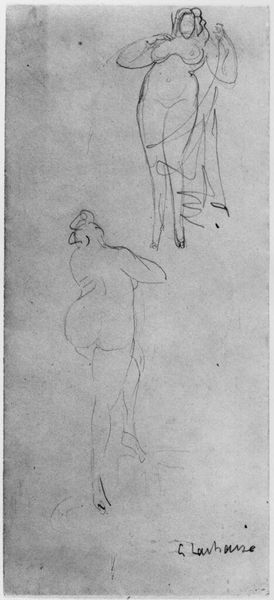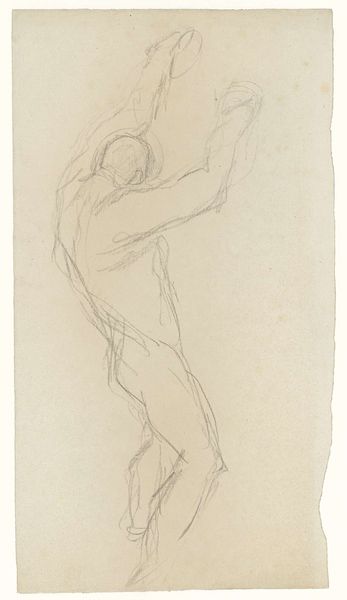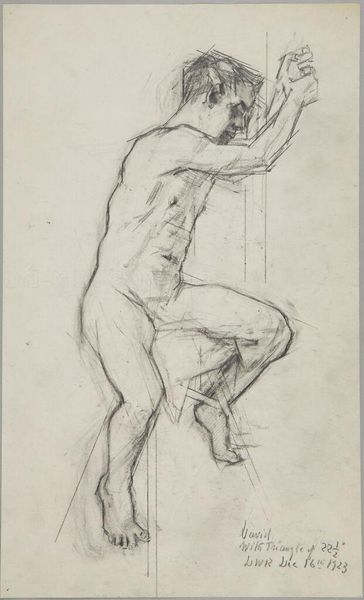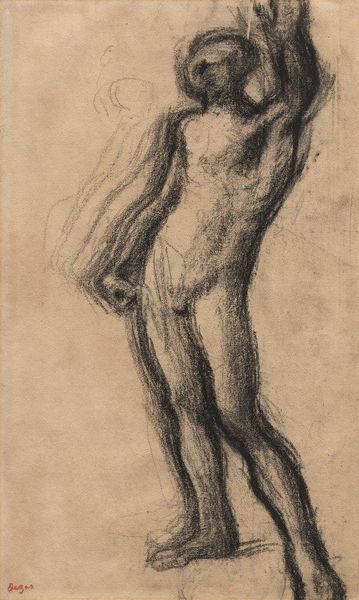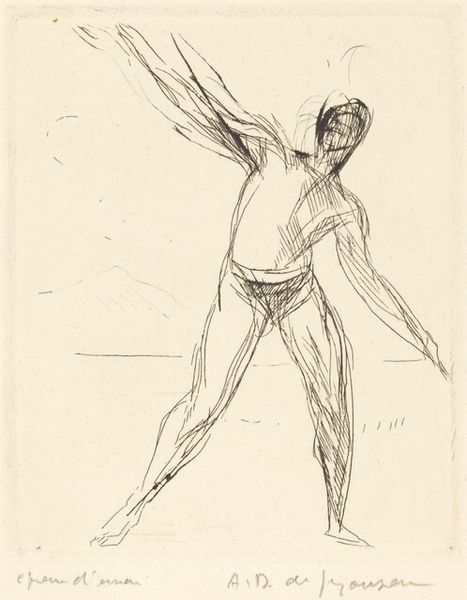
drawing, pencil
#
portrait
#
drawing
#
vienna-secession
#
figuration
#
sketch
#
pencil
#
symbolism
#
nude
#
male-nude
Copyright: Public domain
Curator: Before us is Gustav Klimt's "Kneeling Male Nude With Sprawled Out Arms, Male Torso," a pencil drawing from 1902. Editor: It strikes me as a study in tension, not just physical but psychological. The fragility of the pencil line contrasts starkly with the implied muscularity. It’s haunting. Curator: Observe the artist's focus on line and form, characteristic of his Vienna Secession period. The figure's posture is unusual; kneeling with arms outstretched, it creates a compelling compositional tension. There is almost a ghostly afterimage of the torso there as well. Semiotically, we might explore the subject’s positioning; his pose certainly begs interpretation, almost symbolic. Editor: But it's pencil on paper, a readily available and accessible medium, diverging from traditional art practices focused on costly materials and techniques. Think of the labor involved. The drawing seems to challenge the elevated status typically given to artwork during the Secession; its inherent intimacy lies in the artist’s hand's direct interaction with a rather humble piece of paper. Curator: Interesting, how you bring it back to the act of creation itself. However, consider the overall construction. The formal choices invite speculation, no? Klimt masterfully employs implied lines and negative space, forcing our eye to complete the image, enhancing its emotive impact. Editor: It is still inherently class-based because, at the time, it afforded the bourgeois the ability to engage with a model; Klimt makes many decisions based on consumer expectation. Moreover, while it is rendered with starkness, the material production allows a replication and further engagement of Klimt's vision and status, furthering him materially. Curator: A pragmatic interpretation. Still, by exploring these complex geometries, and his almost abstracted figures, we unveil the essence of human emotion, and, crucially, Klimt's unique vision during this key developmental moment in art history. Editor: Indeed, thinking about it more deeply now I better see how Klimt utilized inexpensive resources available to him and how the nude as a historical motif gets interrogated under a changed lens. Curator: An excellent way to bring the piece into our contemporary focus!
Comments
No comments
Be the first to comment and join the conversation on the ultimate creative platform.
